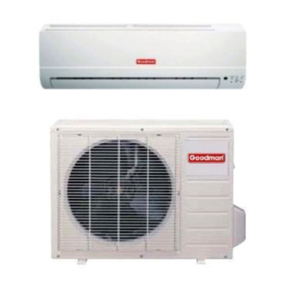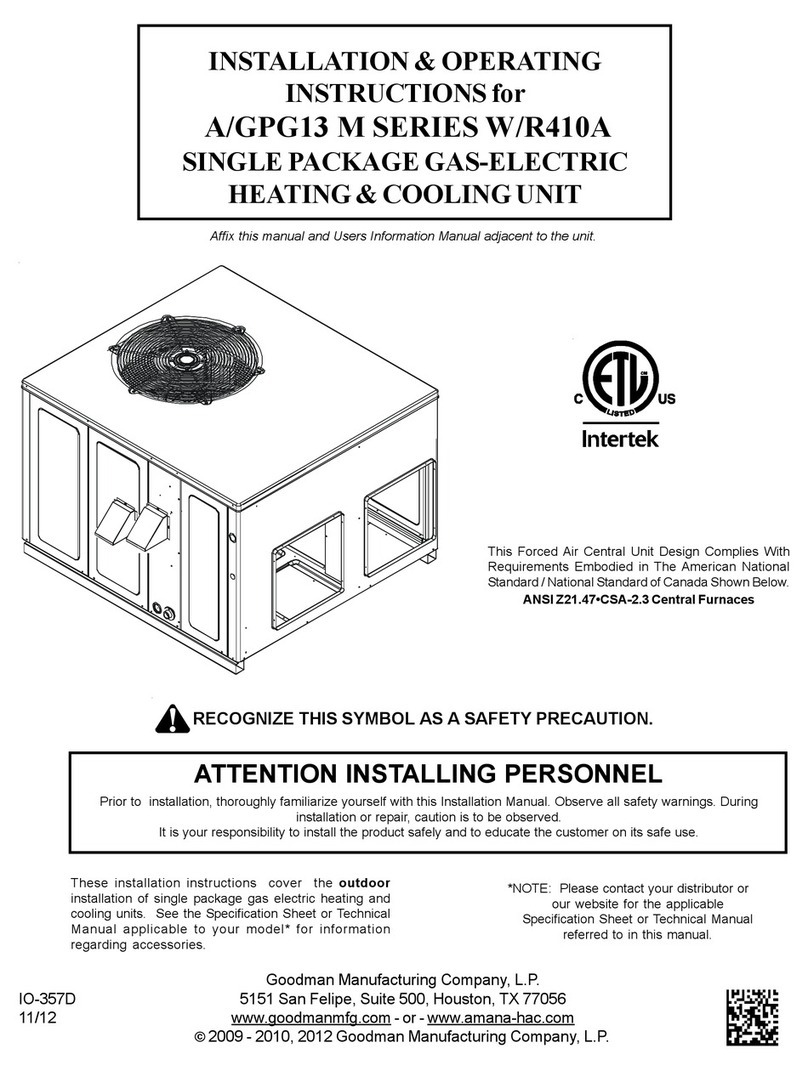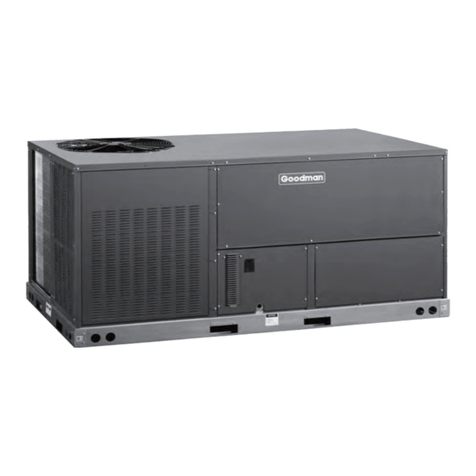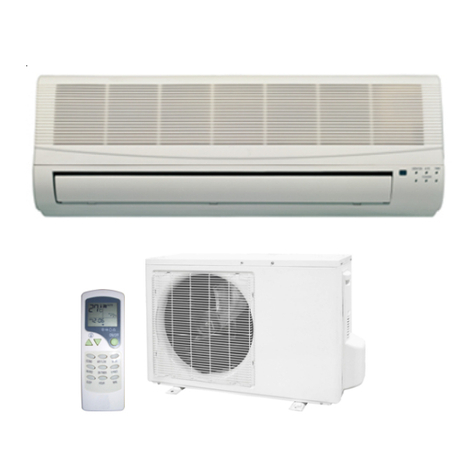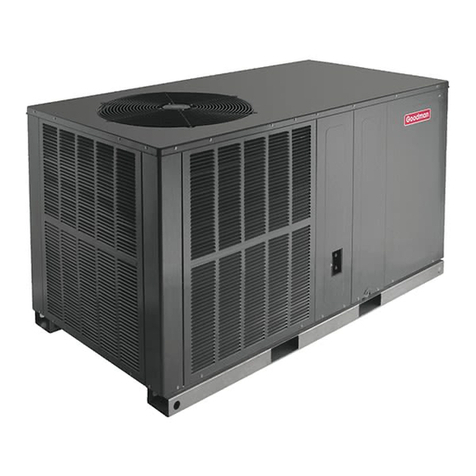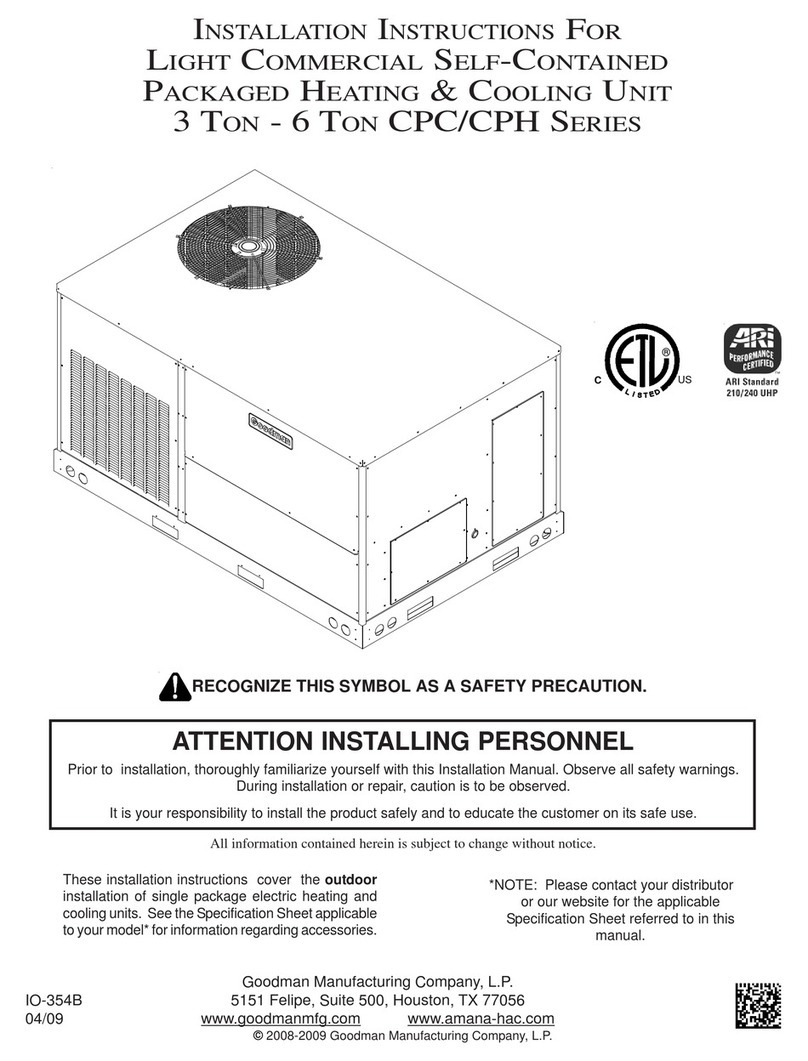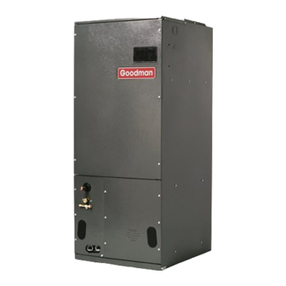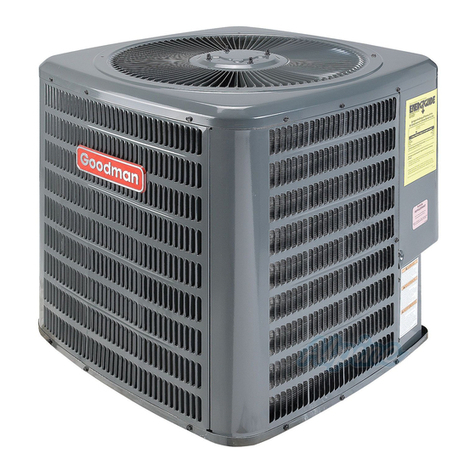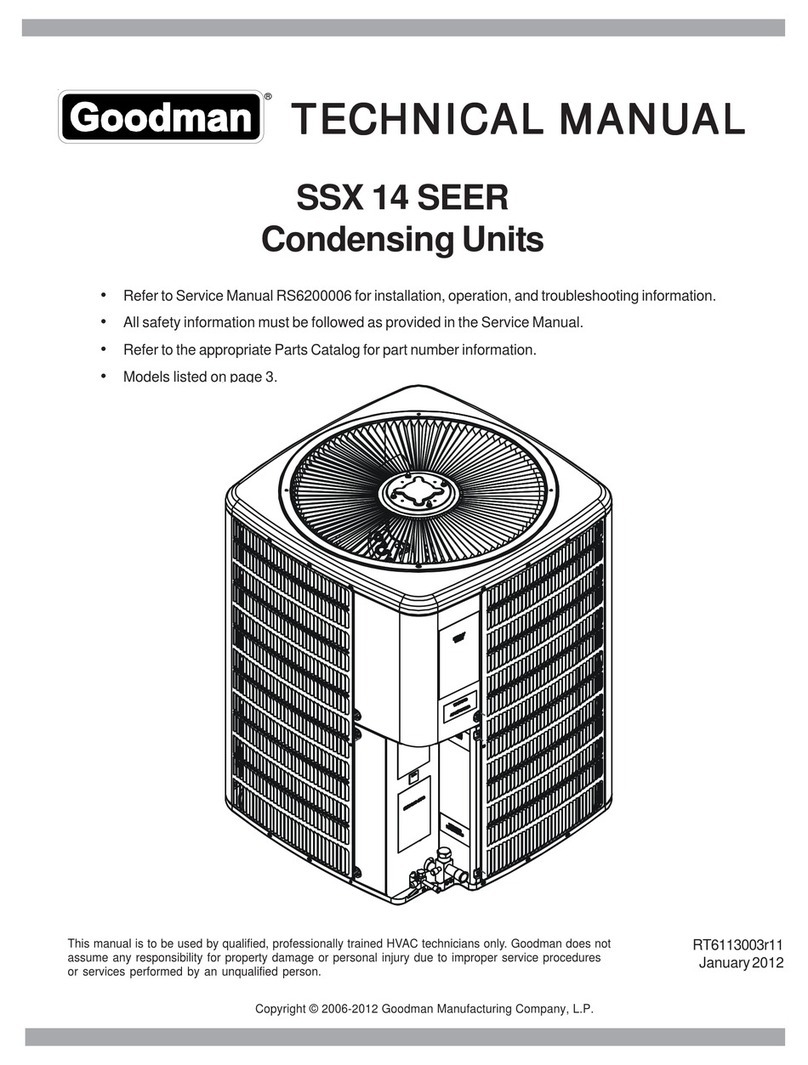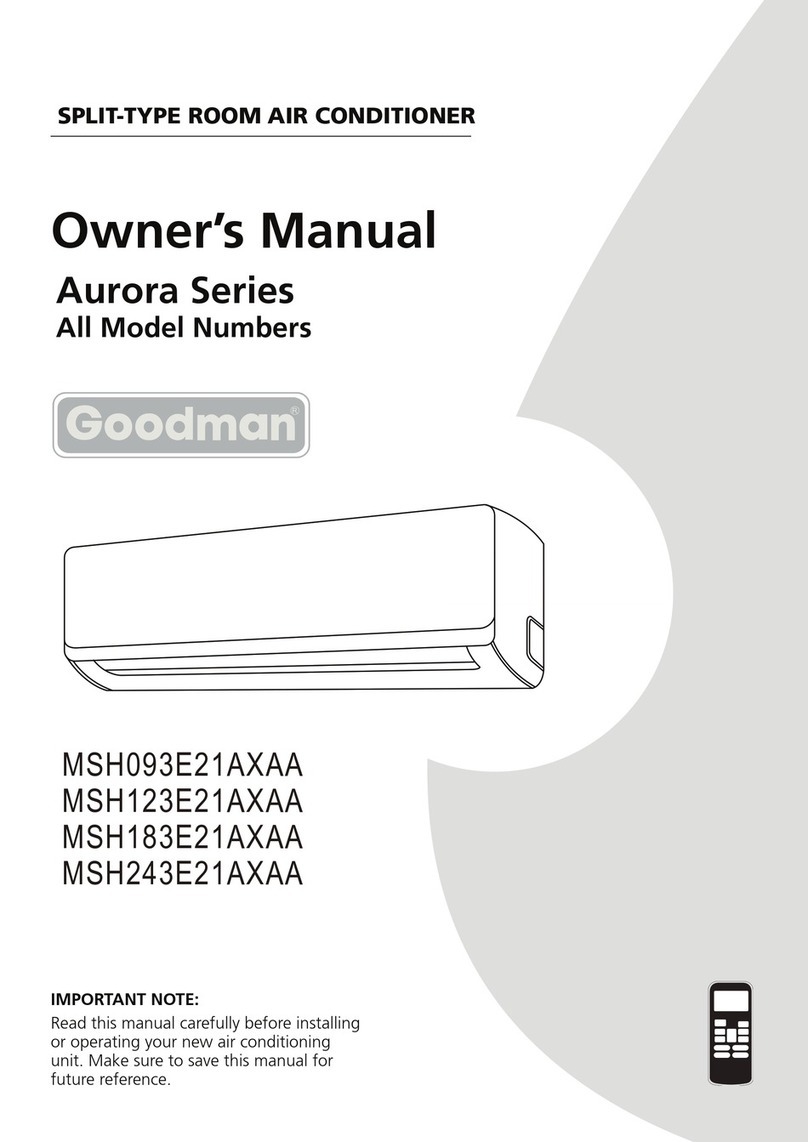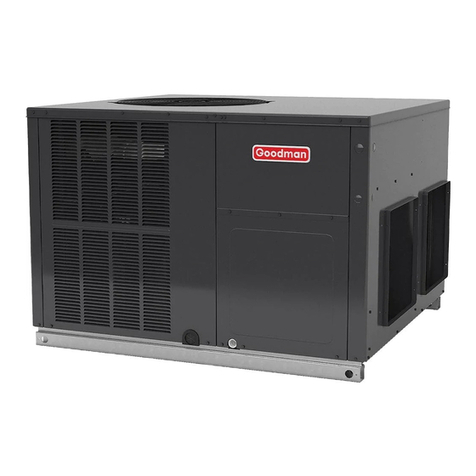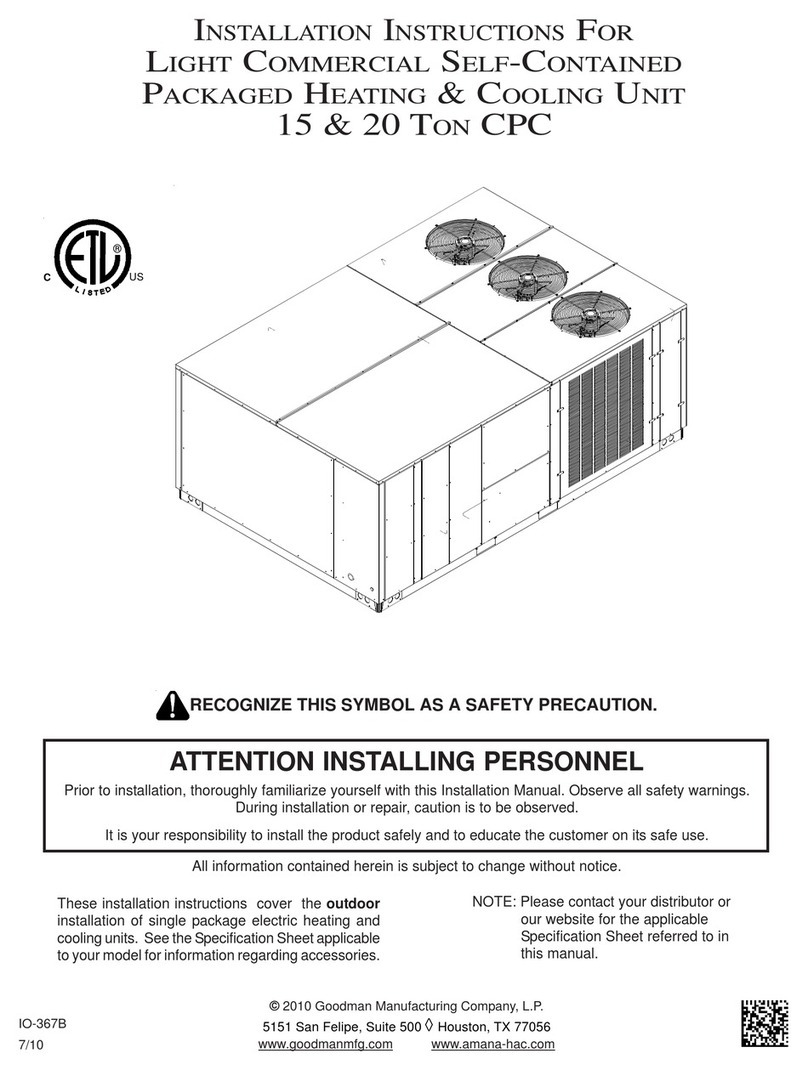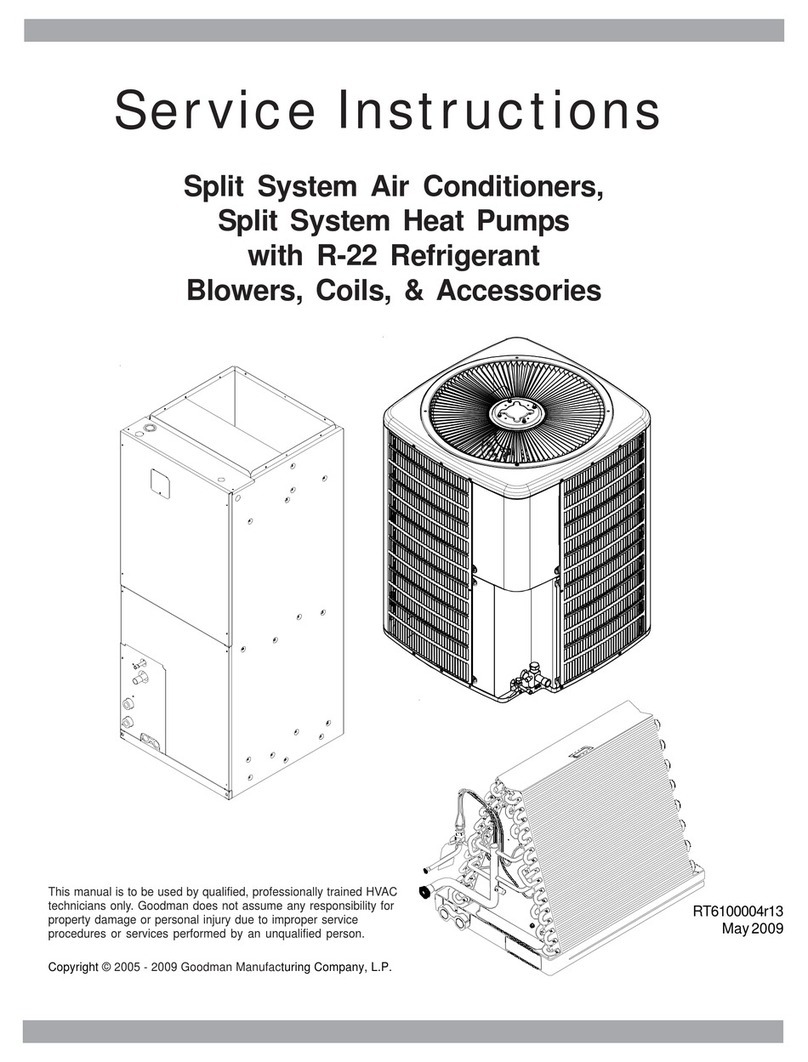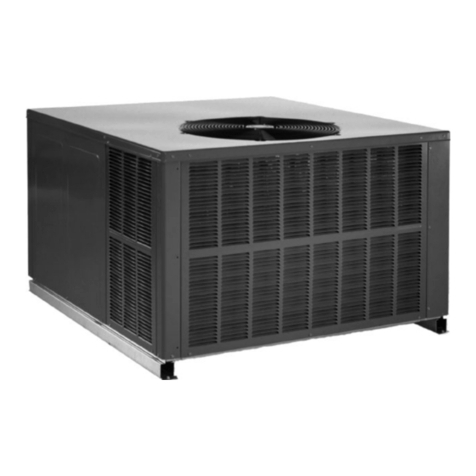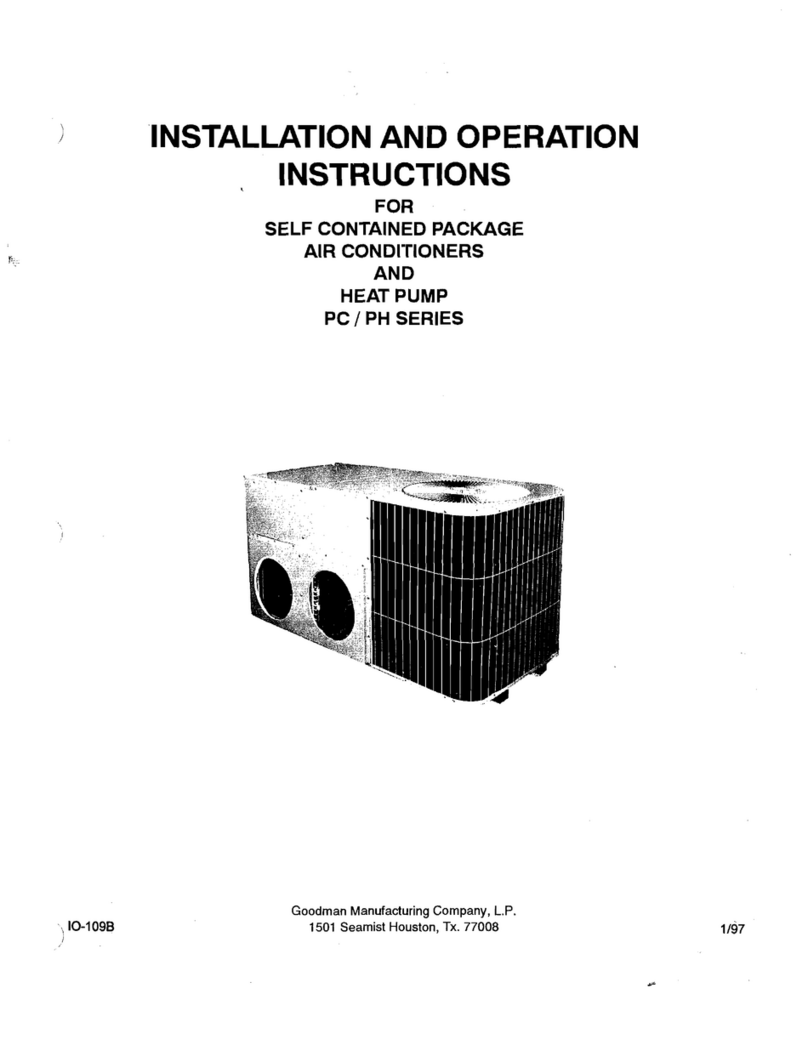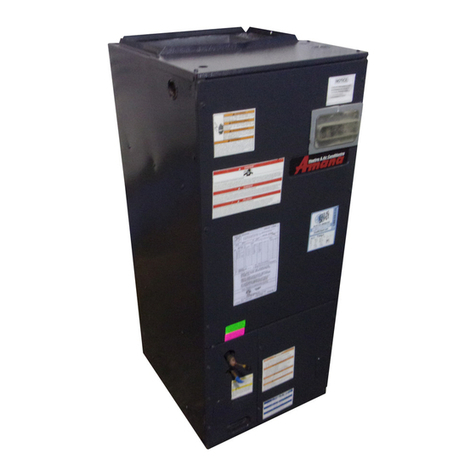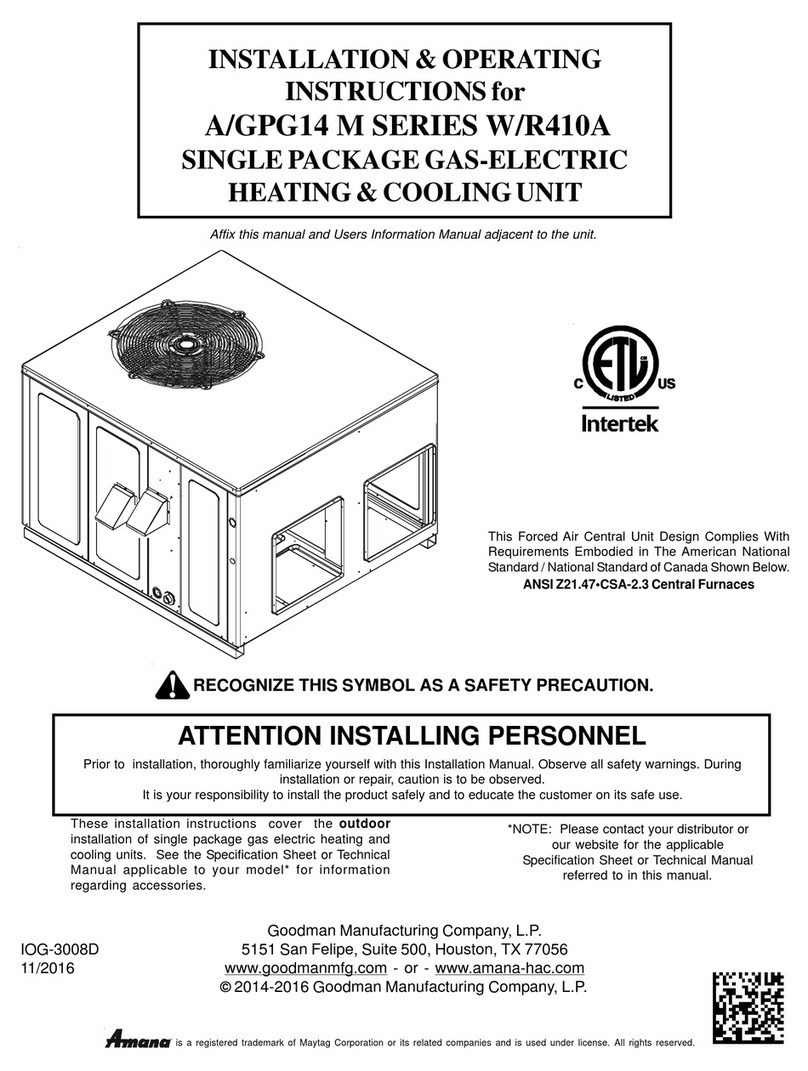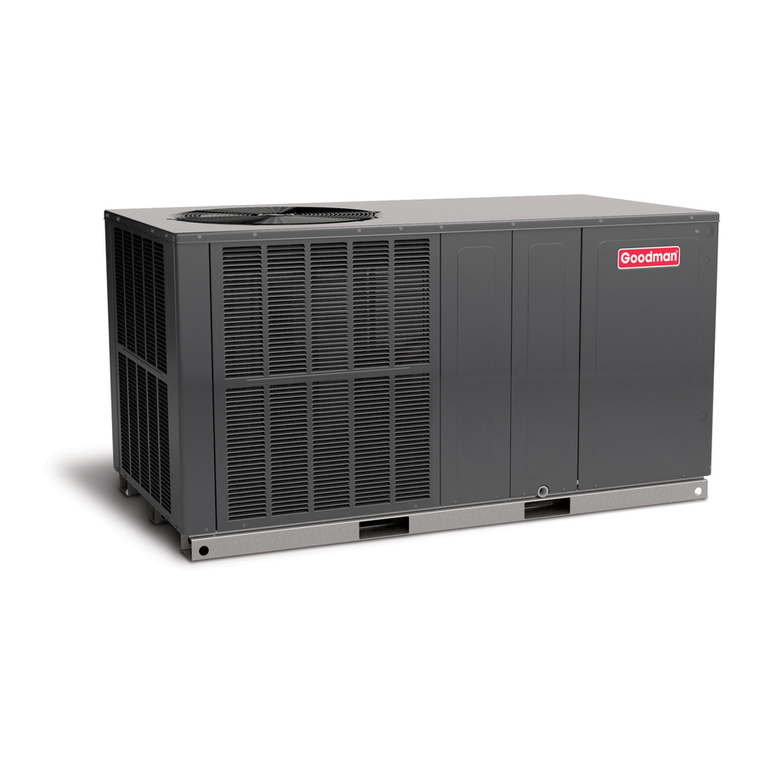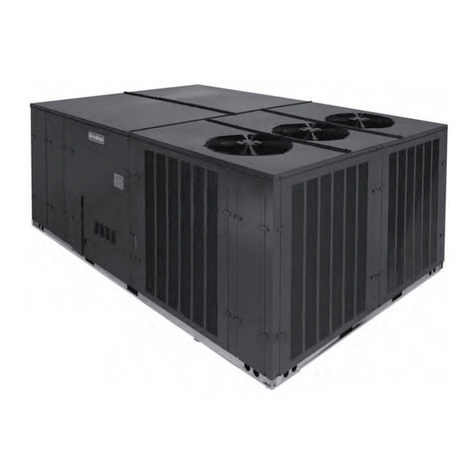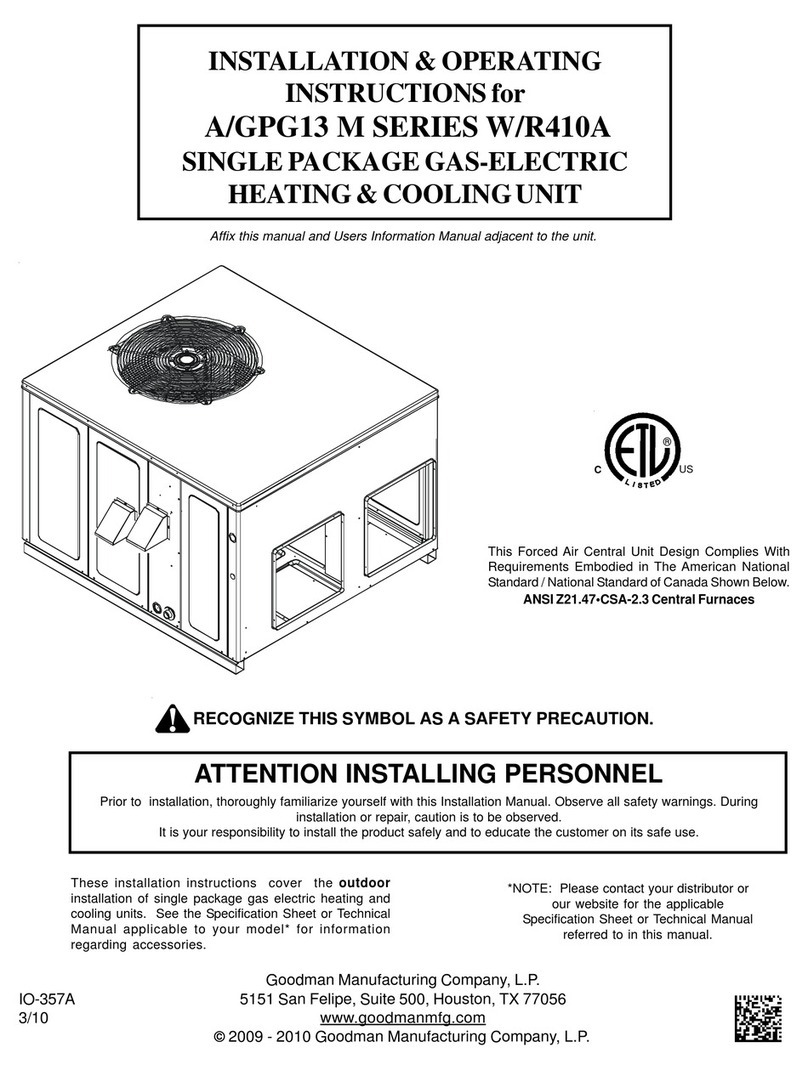
PRODUCT DESIGN
4
GSC/VSC13 SEER models areavailable in 11/2 through 5
ton sizes. They are designed for 208/230 volt single phase
applications. Select GSC 3 phase models are available in
230Vand/or460V.
The condenser air is pulled through the condenser coil by a
direct drive propeller fan. This condenser air is then dis-
charged out of the top of the cabinet.
These units are designed for free air discharge, so no addi-
tional resistance like duct work shall be attached.
The suction and liquid line connections on present models
areofthesweattypeforfieldpipingwithrefrigeranttypecop-
per. Back seating valves are factory installed to accept the
fieldruncopper. The total refrigerantcharge for a normal in-
stallation is factory installed in the condensing unit. GSC/
VSCunitsarechargedforthematchingevaporator coil anda
15footrefrigerant line set.
Systems should be properly sized by heat gain and loss
calculations made according to methods of the Air Condi-
tioning Contractors Association (ACCA) or equivalent. It is
the contractors responsibility to ensure the system has ad-
equate capacity to heat or cool the conditioned space.
Some GSC/VSC condensing units use a mix of Copeland
Reciprocating®andCopelandCompliant®Scrollcompressors.
Thereare anumberofdesign characteristicswhicharediffer-
ent from the scroll compared to the traditional reciprocating
compressor.
Due to their design Scroll compressors are inherently more
tolerantofliquidrefrigerant.
NOTE: Eventhough the compressorsectionofaScroll com-
pressorismoretolerantofliquidrefrigerant,continuedflood-
backor flooded start conditionsmay wash oil fromthe bear-
ingsurfacescausing premature bearing failure.
CopelandCompliant®Scrollcompressorsuse whiteoilwhich
iscompatiblewith3GS. 3GSoilmaybeused if additional oil
isrequired.
The GSC/VSC condensers use new generation scroll com-
pressors,exceptfortheVSC130181A*/B*andGSC130181C*
whichuse arotarycompressor. Thescrollcompressorshave
aninternal equalization mechanismandananti-counterrota-
tion device which allow the scrolls to equalize in approxi-
mately ½ second at shut down.
Operating pressures, amp draws and minimum circuit am-
pacity may differ from standard reciprocating compressors.
This information may be found in the "Cooling Performance
Data" section and should be reviewed prior to installation of
thecondenser.
GSC130361DFuse Bristol®BENCHMARK™compressors,
the most advanced compressors in the industry today. The
BENCHMARK™reciprocatingcompressorcanberecognized
bya “J” inthefourthcharacterofthe compressor modelnum-
ber. Innovativemechanicaldesignandgasmanagementmake
theBENCHMARK™ compressor very efficientand remark-
ably quiet. The sound content (frequency) delivers excep-
tionalacousticalcharacteristicsandthevirtuallyroundhous-
ing design is compact and also helps to reduce the overall
soundand vibration.
OK!
OK!
AA AAA
A
CC
CCOK!
OK!
OK!
OK!
NOT
RECOMMENDED
AA
AA AA
AA
AA
B B B
B
Model Type A B C AA
Residential 10" 10" 18" 20"
Light Commercial 12" 12" 18" 24"
Minimum Airflow Clearances
Special consideration must be given to location of the con-
densing unit(s) in regard to structures, obstructions, other
units, and any/all other factors that may interfere with air
circulation. Where possible, the top of the unit should be
completely unobstructed; however, if vertical conditions re-
quire placement beneath an obstruction there should be a
minimum of 60 inches between the top of the unit and
theobstruction(s). Thespecified dimensions meetrequire-
mentsforair circulation only. Consultallappropriate regula-
torycodes prior to determiningfinal clearances.
Another important consideration in selecting a location for
the unit(s) is the angle to obstructions. Either side adjacent
the valves can be placed toward the structure provided the
sideawayfromthestructuremaintainsminimumserviceclear-
ance. Cornerinstallations are strongly discouraged.
DO NOT locate the unit:
– Directlyundera vent termination fora gas appliance.
– Within 3 feet of a clothes dryer vent.
– Where the refreezing of defrost water would create a
hazard.
– Where water may rise into the unit.
